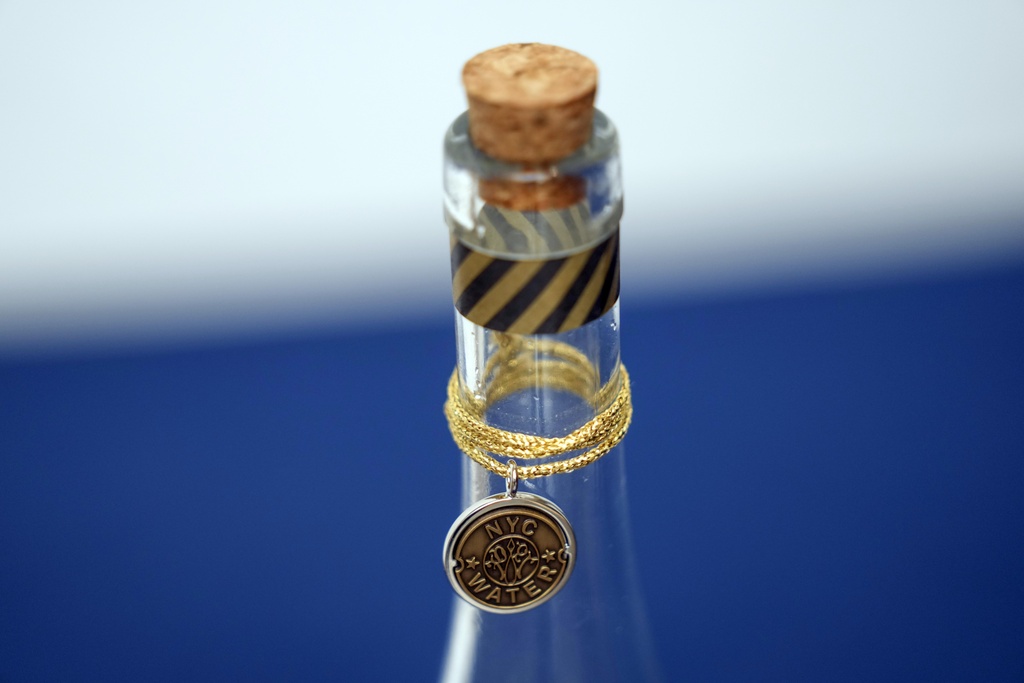Mayor Urges Water Conservation Amid New York’s Severe Drought \ Newslooks \ Washington DC \ Mary Sidiqi \ Evening Edition \ Following New York City’s driest October in over 150 years, Mayor Eric Adams has issued a drought watch, urging residents to conserve water as conditions remain critical. Amid ongoing aqueduct repairs and an increased reliance on local reservoirs, Adams has asked citizens to adopt water-saving habits to stave off potential shortages. Nearly half of the U.S. experienced flash droughts last month, affecting waterways and raising fire risks across the Northeast.
New York City Drought Watch: Mayor Urges Conservation Amid Record Dry Conditions
- Historic Drought in New York: October marked the driest in NYC’s recorded history, with only 0.01 inches of rain in Central Park—well below the monthly average of 4.4 inches.
- Mayor Adams’ Call to Action: The mayor urged shorter showers, fixing leaks, and mindful water use to mitigate potential shortages. City agencies have been directed to prepare water conservation plans.
- Aqueduct Repairs Strain Supply: Ongoing repairs on a key aqueduct from the Catskills have increased reliance on nearby reservoirs, which also saw a dry October.
- Nationwide Flash Drought Impact: Nearly half of the U.S. faced flash drought conditions last month, straining shipping routes and increasing wildfire risks, especially in the Northeast.
- Fire Safety Concerns: Following dry conditions, the National Weather Service issued elevated fire risk warnings in several states, with recent fires in Connecticut tragically claiming the life of a firefighter.
Deep Look
“Mother Nature is in charge, and so we must make sure we adjust,” said Adams, highlighting that the drought watch is only the first step in a three-level system of water conservation measures. “Let’s all do our part to prevent this situation from worsening.”
City agencies have been ordered to implement water conservation plans immediately. Adams urged residents to turn off taps when brushing teeth, report any street leaks, and avoid hosing down sidewalks. He especially emphasized the importance of reporting open fire hydrants and other leaks, citing a recent case in Brooklyn where a hydrant leak fed a small pond on the sidewalk. He reminded the public of the vital role they play in ensuring that resources are not wasted, especially in such challenging conditions.
The Worst October Drought in New York’s History
National Weather Service records confirm that this October was the driest in over 150 years, with rainfall barely measurable in Central Park, which usually receives around 4.4 inches for the month. In the northern suburbs, which supply much of New York City’s water, the situation was only marginally better, with rainfall totaling 0.81 inches—just a fifth of the area’s typical October levels. New York City Department of Environmental Protection Commissioner Rohit Aggarwala described the conditions as unprecedented.
Despite New York’s extensive water infrastructure, the city’s daily consumption still averages around 1.1 billion gallons. This figure is about 35% below its 1979 peak, thanks to advancements in leak detection and conservation measures, but current conditions demand even greater care to ensure sustainable water use.
Flash Droughts and the National Impact
The drought in New York reflects a broader pattern affecting nearly half the country. Flash droughts, which occur due to minimal rainfall combined with abnormally high temperatures, are straining water resources across the United States. The Northeast saw an unusually warm October, with Halloween temperatures in New York reaching the high 70s and low 80s, uncharacteristically high for the season. This phenomenon, experts say, results from weather patterns blocking moisture from moving up from the Gulf of Mexico, leaving large areas of the country in rapid-drying conditions.
Flash droughts are particularly challenging as they can quickly impact waterways and landscapes, causing immediate repercussions. The Mississippi River, which serves as a vital trade route, experienced waterway restrictions due to low levels, affecting shipping capacity. Furthermore, unseasonably dry and warm conditions have elevated fire risks, especially in the Northeast, where fire warnings remain in effect across several states.
Fire Risks and Conservation Measures
Given the challenges of limited rainfall and dry conditions, Adams’ drought watch also underscores the importance of fire safety, as lower water availability can impact firefighting efforts if resources are further strained.
A Call to Action for New Yorkers
Mayor Adams’ call for water conservation is an appeal to New Yorkers to act collectively, especially as the city faces water supply constraints due to repair efforts and dry conditions. Adams’ drought watch is the first in a tiered conservation plan, with potential for further restrictions if conditions worsen. In a social media video, he highlighted small changes residents can make to help, including taking shorter showers and fixing dripping faucets.
As New York City’s daily water consumption remains high, Adams’ plea underscores a growing awareness that sustainable water use is essential for the city’s future, particularly amid changing weather patterns. With an emphasis on mindful use, immediate repairs, and a shift toward conservation, New York City hopes to manage its resources effectively, preparing for the challenges that lie ahead in what experts predict may be a prolonged dry season.
Mayor Urges








You must Register or Login to post a comment.